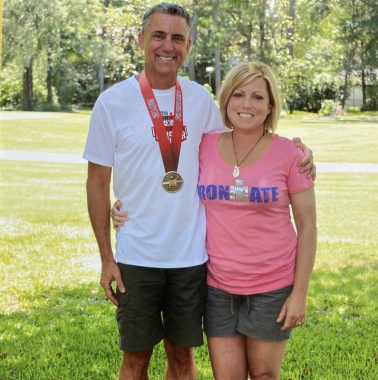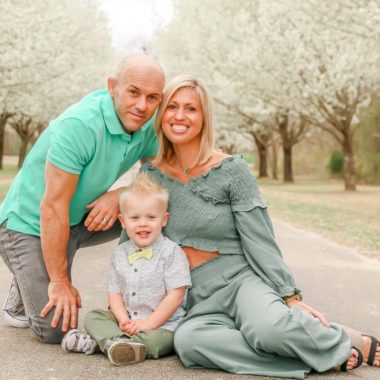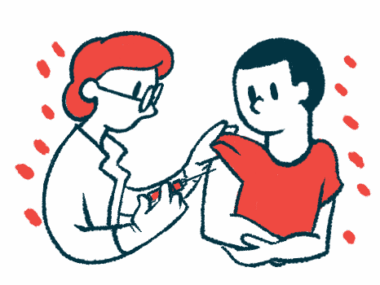HSCT Has Given These Scleroderma Warriors a New Tomorrow
Written by |

When I first met Cyndy Martin, 58, I was impressed with her vitality and energy, but she had been severely affected by the ravages of scleroderma only a few years before.
Meghan Newell Davis, 36, was a nutritionist and marathoner who ran Ironman triathlons. A new mom, she started to have serious symptoms nine weeks after delivering her son.
Cyndy and Meghan were both diagnosed with rapid diffuse scleroderma with severe organ involvement. Without extreme and immediate treatment, their lifespan would be significantly shortened.
Now these two scleroderma warriors are living incredible lives with a focus on educating specialists and individuals with scleroderma about the treatment that reversed their symptoms: hematopoietic stem cell transplantation (HSCT).
According to the National Institutes of Health, HSCT uses chemotherapy and total body radiation to destroy the bone marrow. A person’s own blood-forming stem cells are then transplanted to reconstitute the marrow and immune system, which has been shown to improve survival and quality of life for people with severe scleroderma.
In this column, we ask Cyndy and Meghan about their journey with HSCT.
DCW: What was the condition of your health when you first considered HSCT? The success rate for HSCT is mixed. What reasons tipped you toward the treatment?
CM: My disease was immediately labeled rapid and aggressive by several specialists. My quality of life declined rapidly as my skin, entire digestive tract, hands, feet, heart, [and] lungs were all damaged. I quit running, suffered anxiety, my social life faded. I lost 20 pounds, couldn’t tolerate many foods, and always felt sick. Once ILD [interstitial lung disease] was added to my diagnosis, I aggressively pursued HSCT. At that point, I believed the risk of dying from my disease was far greater than the risk of HSCT. Plus, HSCT gave me a 75% chance of halting the disease and living more than just a few years!

Cyndy Martin and her husband, Bill. (Courtesy of Cyndy Martin)
MND: Before diagnosis I was an athlete. Nine weeks after having my son, Austin, my extremities were swollen with pain and discomfort in all my joints, [and] I had problems eating and swallowing. I went to my primary [physician] in a wheelchair because I could no longer walk, [and] he referred me to Dr. Jon M. Twining, who said I had the worst case of scleroderma he had ever seen. In December, my skin score was a 49/51. My doctors suggested I speak with the Duke Medical Center HSCT team immediately. I was crying so hard in the office I didn’t care or have time to think of the risk.
What were your major challenges during the HSCT treatment process?
CM: Chemo was the biggest challenge to endure during HSCT. Due to my heart involvement, I experienced heart failure during chemo. It manifested as fluid overload and extreme fatigue. Recovery was a very slow roller coaster for about a year. Luckily, my husband, Bill, was a fantastic support and we remained optimistic.
MND: During radiation I couldn’t hold myself still for chemo. But the thought of kissing my son, Austin, and husband, Kenneth, is how I got through. I was determined to stop the progression and reverse it.
After the HSCT, what were your major physical markers during the recovery period?
CM: Inflammation disappeared immediately while I was still at Northwestern Memorial Hospital. This softened my skin significantly, allowing normal body movement again, and it improved my lung function. My skin score went from 30 to 13 the first year, to 3 the next. My DLCO [diffusing capacity of the lungs for carbon monoxide] went from 52% to 70%, where it remains today. I began walking, then running, participating in a 5K race on day 100 post-transplant! I returned to a normal diet. I stopped all prescriptions except omeprazole for GERD [gastroesophageal reflux disease]. I have returned to a busy, active life where I don’t feel I have a disease.
MND: I have a skin score of 2 and I’m no longer tight. My hands are no longer curled. I went back to work full time eight months after radiation. During my HSCT, my pain went away immediately. Mental health is so important during recovery. Asking for an antidepressant to help balance my mind was OK. There is no shame in getting help.

Meghan Newell Davis, her husband, Kenneth, and son, Austin. (Courtesy of Meghan Newell Davis)
What advice would you give to a person with scleroderma contemplating HSCT?
CM: Since HSCT is best for early aggressive disease, I recommend patients see the best scleroderma expert they can early in their disease. Go to a SSc [scleroderma and systemic sclerosis] research center. If it’s too early, you can wait; if it’s too late, it’s just too late. Join my Facebook group, Scleroderma Stem Cell Pioneers, to learn more.
MND: You don’t have to be too sick! Research. Find a clinic that performs HSCT and their success rate. No one understands HSCT better than someone who has gone through the process. You are stronger than the disease, and we must fight! You can find my journey at my Facebook group, Meghan’s Race to a HSCT.
***
Note: Scleroderma News is strictly a news and information website about the disease. It does not provide medical advice, diagnosis, or treatment. This content is not intended to be a substitute for professional medical advice, diagnosis, or treatment. Always seek the advice of your physician or other qualified health provider with any questions you may have regarding a medical condition. Never disregard professional medical advice or delay in seeking it because of something you have read on this website. The opinions expressed in this column are not those of Scleroderma News or its parent company, Bionews, and are intended to spark discussion about issues pertaining to scleroderma.







Diane D
Interesting. I'm dealing with some traits of Scleroderma FROM a HSTC and the resulting GVHD. (Graft vs Host Disease). "They" (the infamous white-coated they) call it scGVHD or "sclerotic-like" changes I'm going thru. Fibrosis in my lungs, thicking tissue on my lower legs and ankles, restricting movement. So far confined to my lower legs and feet. But after reading about "real" scleroderma, I feel lucky if that's a word any of us can use. I'm on a multitude of drugs and immunusupressants, but the fibrosis is creeping forward.
I congratulate all of you for your bravery in heading directly into HSTC. It's no cake walk but then neither is the alternative. And thank you, Dinah... for your wonderful sense of humor. If I can help with any questions regarding stem cell transplants, please feel free to ask.
Diane
Dana McCaron
How late is too late? I’m in my 5th year of diffuse Scleroderma. My skins seems to have softened some but my muscles and tendons are very tight. My range of motion is affected. I have esophageal and lung involvement and while those organs seem to have held at the current rate of involvement my hands continue to curl. I bang my knuckles so much that they have painful sores on them that never quite heal.